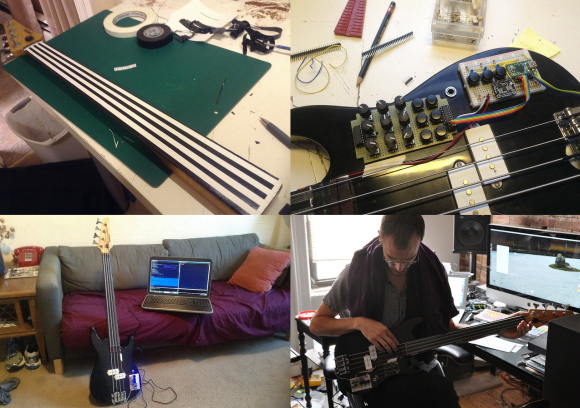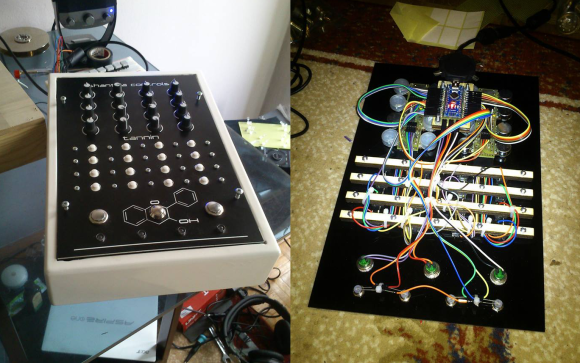
[Brendan Byrne] stripped this instrument down to basics and built himself a ribbon controller bass guitar. Details are still a bit sparse on his website, but there are plenty of detailed pictures on his flickr stream. [Brendan] built his bass as part the Future of Guitar Design Course at Parsons the New School for Design. His goal was to create an experience in which playing the instrument and altering parameters of effects are triggered by the same gestures. He’s definitely succeeded in that effort.
Basically, the bass is a four channel ribbon controller. The frets were removed to make way for four graphite strips. [Brendan] followed [Iain’s] excellent tutorial to create his own graphite strips using soft artist’s pencils. The ribbons essentially become potentiometers, which are then read by a teensy. [Brendan] expanded the instrument’s sonic palette by adding several buttons and potentiometers mapped to MIDI control codes. He even included a triple axis accelerometer so every movement of the bass can be mapped. The MIDI data is sent to a PC running commercial music software. Analog sound comes from a piezo pickup placed under the bridge of the bass.
The results are pretty awesome. While we can’t say [Brendan’s] demo was music to our ears, we definitely see the musical possibilities of this kind of instrument.
Continue reading “Rock Out With Your Ribbon Controller Bass”


 [Bonnie] is majoring in CS at Princeton and minoring in Awesome. She is taking an electronic music class and had to produce a digital instrument for her midterm project. She and her friend [Harvest] came up with
[Bonnie] is majoring in CS at Princeton and minoring in Awesome. She is taking an electronic music class and had to produce a digital instrument for her midterm project. She and her friend [Harvest] came up with 












